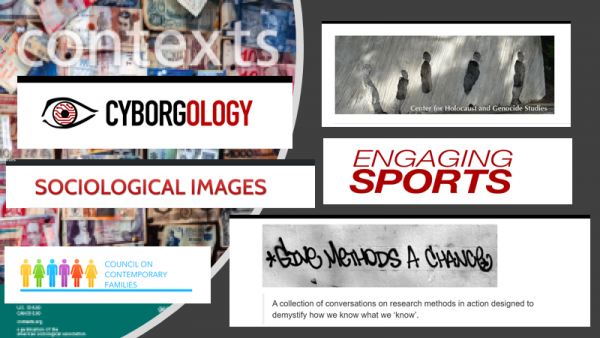
Are you exhausted? Zoomed out? As we say in critical incident stress management (CISM), “You are having a normal response to an abnormal situation.” This reflection is considering the faculty or administrator perspective on our current interpersonal reality. The student perspective is a separate writeup.
How could you have attended the same number of meetings in Normal World B.C. (Before COVID-19) and your schedule wasn’t nearly this exhausting? This is a matter that potentially affects only those of us privileged enough to be able to do at least two things: (1) continue doing our paid jobs, and yet (2) stay home and safe. For those of us in this virtual boat, many are realizing how attending the same number of meetings as in a usual week is way way way more exhausting when they happen via a video conferencing platform such as Zoom. There are many reasons, and here are three:
1. Perceptual mismatch
When you’re in a meeting, like back when we did that sort of thing together in the same space, you’d get a “read of the room.” It’s in our nature to do this. You’d scan the room, passively attending to details like, how are people feeling? What’s the mood or the vibe here today? Do folks seem to be on the same page? This is natural. In a video conference though? You are trying to read 25 rooms. You are. It’s in your nature. And you’re trying to do this while, ironically, ignoring the room you are literally in. That is not how perception works, which is the process through which we attach meaning to our sensory input in order to understand the social world. You’re trying to read all the rooms up on that screen, while ignoring the sensory information coming at you from within the room in which you are physically located, and that’s before you even engage with anybody. Speaking of the rest of the people:
2. Interpersonal intensity
When you’re in a room in Normal World B.C., you are not trying to maintain continuous eye contact with 25 people for an hour. In person, you can be in a group in shared space, completely engaged, attentive and present, and you’re still not maintaining eye contact with every single person at the same time. In a video conference, even looking down at a relevant piece of paper can be perceived as you checking out, no longer actively listening, or some other indicator assumed to be a lack of effort.
3. High vulnerability and intimacy
While reading all the rooms and ignoring your own, and doing your best to maintain eye contact with everyone in a group continuously, you are also letting people read YOUR room. Your room right now is probably inside or outside the place you presently call home. That’s a level of vulnerability and intimacy greater than you signed up for when you began in this position, right? You didn’t plan on letting these people into your living room or your bedroom.
There’s Science Behind This!
The psychological and mental health effects of shifting nearly all of our interpersonal interactions into video conferencing is yet unstudied. What I’ve written in this piece is based on what we know to date about how the brain does its job.
For more information on the perceptual burden you might be experiencing, look first at the process of “unconscious inference” known as perception itself. As we take in sensory information, through the process of sensation, our brain has to work with that input to produce something for us to understand and to which we then respond, through the process of perception. Reading 25 rooms while ignoring the sensory input from the very room you are in, makes this entire meaning-making process inherently more complex and likely burdensome. This is a traditional, bottom-up explanation of perception.
Another perspective on perception is one of top-down processing, which “occurs when people’s expectations, emotions, and bodies affect how they see the world” (Reiner, 2019:267). This explanation is one of embodied perception, considering sensation and perception as not linear and not separate from our physical selves.
Whether you view processing as top-down or bottom up, you will find explanations of your present state of exhaustion. Then recognize that making eye contact is one of the earliest forms of social communication we learn in our lives. This primal social role is made more central when we’re in video conferences that make most other social communication harder to gauge. We might feel the need to maintain eye contact more than what we would normally do, given this restriction of the medium, and this would likely contribute to our cumulative exhaustion.
What else?
Of course, there are more than three reasons why you might be feeling exhausted. The runners up include blurring of boundaries that can lead to you working well into the evenings and weekends when you never did that before. You might not be the cause of those boundaries blurring – especially when your boss expects you to respond at all hours, but you might find that you need to draw a line more firmly around your off time. You’re also suddenly some kind of movie producer to some extent, which probably isn’t within your skillset, so that’s tiring as you try to excel at something you’ve possibly never even planned to try. And none of this even considers the exhaustion and psychache we all are feeling to varying degrees as we interpret the current global pandemic, with concerns for the future of society and worry for the people we love within it. How could you not be exhausted right now?
If you are reading this and you have any authority in this world, please cut folks some slack. If your organization can continue to be fully functional online? Cool. If you’re a boss, shorten the meetings. If you are an educator, lean towards fewer assignments and lessened demands. Shorten the meetings and classes. The exhaustion you are feeling makes sense, and it is universal. Please take care of junior faculty, graduate students, and the support staff whom you are probably realizing are working more than they should be.









